Related Research Articles
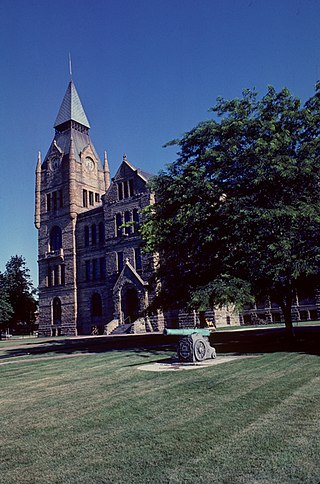
Knox County is a county in the U.S. state of Illinois. According to the 2020 census, it had a population of 49,967. Its county seat is Galesburg.
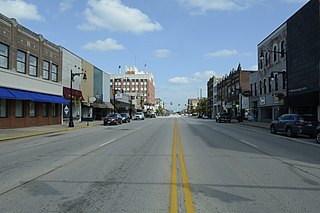
Galesburg is a city in Knox County, Illinois, United States. The city is 45 miles (72 km) northwest of Peoria. At the 2010 census, its population was 32,195. It is the county seat of Knox County and the principal city of the Galesburg Micropolitan Statistical Area, which includes all of Knox and Warren counties.

Danny Lyon is an American photographer and filmmaker.

Timothy Greenfield-Sanders is an American documentary filmmaker and portrait photographer based in New York City. The majority of his work is shot in large format.

John Rivers Coplans was a British artist, art writer, curator, and museum director. A veteran of World War II and a photographer, he emigrated to the United States in 1960 and had many exhibitions in Europe and North America. He was on the founding editorial staff of Artforum from 1962 to 1971, and was Editor-in-Chief from 1972 to 1977.
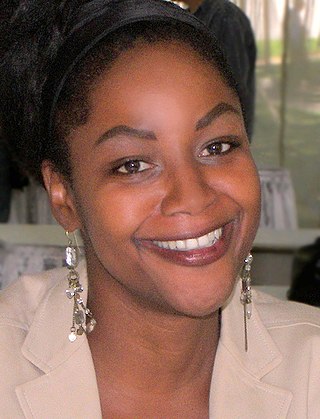
Zuwena "ZZ" Packer is an American writer, primarily of works of short fiction.She is the recipient of a Rona Jaffe Foundation Writer’s Award, a Whiting Award and a Guggenheim Fellowship. Her book Drinking Coffee Elsewhere won the Commonwealth First Fiction Award and an ALEX award. It became a finalist for the PEN/Faulkner award and was selected for the Today Show Book Club by John Updike.
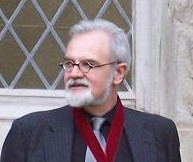
Noël Carroll is an American philosopher considered to be one of the leading figures in contemporary philosophy of art. Although Carroll is best known for his work in the philosophy of film, he has also published journalism, works on philosophy of art generally, theory of media, and also philosophy of history. As of 2012, he is a distinguished professor of philosophy at the CUNY Graduate Center.
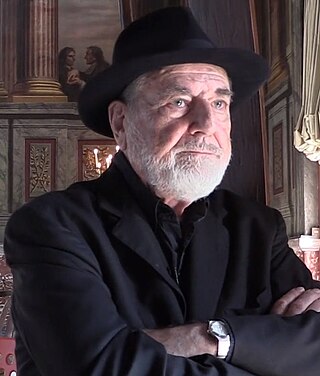
Michelangelo Pistoletto is an Italian painter, action and object artist, and art theorist. Pistoletto is acknowledged as one of the main representatives of the Italian Arte Povera. His work mainly deals with the subject matter of reflection and the unification of art and everyday life in terms of a Gesamtkunstwerk.
Ronald Jones was an American artist, critic and educator who gained prominence in New York City during the mid-1980s. In the magazine Contemporary, Brandon Labelle wrote: "Working as an artist, writer, curator, professor, lecturer and critic over the last 20 years, Jones is a self-styled Conceptualist, spanning the worlds of academia and art, opera and garden design, and acting as paternal spearhead of contemporary critical practice. Explorative and provocative, Jones creates work that demands attention that is both perceptual and political." Labelle positions Jones along the leading edge of a "contemporary critical practice" that is perhaps best described as interdisciplinary or transdisciplinary.

Laurie Simmons is an American artist best known for her photographic and film work. Art historians consider her a key figure of The Pictures Generation and a group of late-1970s women artists that emerged as a counterpoint to the male-dominated and formalist fields of painting and sculpture. The group introduced new approaches to photography, such as staged setups, narrative, and appropriations of pop culture and everyday objects that pushed the medium toward the center of contemporary art. Simmons's elaborately constructed images employ psychologically charged human proxies—dolls, ventriloquist dummies, mannequins, props, miniatures and interiors—and also depict people as dolls. Often noted for its humor and pathos, her art explores boundaries such as between artifice and truth or private and public, while raising questions about the construction of identity, tropes of prosperity, consumerism and domesticity, and practices of self-presentation and image-making. In a review of Simmons's 2019 retrospective at the Museum of Contemporary Art, Chicago, critic Steve Johnson wrote, "Collectively—and with a sly but barbed sense of humor—[her works] challenge you to think about what, if anything, is real: in our gender roles, and our cultural assumptions, and our perceptions of others."

John Douglas Crimp was an American art historian, critic, curator, and AIDS activist. He was known for his scholarly contributions to the fields of postmodern theories and art, institutional critique, dance, film, queer theory, and feminist theory. His writings are marked by a conviction to merge the often disjunctive worlds of politics, art, and academia. From 1977 to 1990, he was the managing editor of the journal October. Before his death, Crimp was Fanny Knapp Allen Professor of Art History and professor of Visual and Cultural Studies at the University of Rochester.

Thomas Lawson is an artist, writer, editor, and from 1991 to 2022 was the Dean of the School of Art & Design at California Institute for the Arts. He emerged as a central figure in ideological debates at the turn of the 1980s about the viability of painting through critical essays, such as "Last Exit: Painting" (1981). He has been described as "an embedded correspondent [and] polemical editorialist" who articulated an oppositional, progressive position for representational painting from within an increasingly reactionary art and media environment. Artforum called his approach to the medium "one of the most cogent and controversial" in the 80s.
Max Kozloff is an American art historian, art critic of modern art and photographer. He has been art editor at The Nation, and Executive Editor of Artforum. His essay "American Painting During the Cold War" is of particular importance to the criticism on American Abstract Expressionism.

Zoe Leonard is an American artist who works primarily with photography and sculpture. She has exhibited widely since the late 1980s and her work has been included in a number of seminal exhibitions including Documenta IX and Documenta XII, and the 1993, 1997 and 2014 Whitney biennials. She was awarded a Guggenheim Fellowship in 2020.
Dike Blair is a New York-based artist, writer and teacher. His art consists of two parallel bodies of work: intimate, photorealistic paintings and installation-like sculptures assembled from common objects—often exhibited together—which examine overlooked and unexceptional phenomena of daily existence in both a romantic and ironic manner. Blair emerged out of the late 1970s New York art scene, and his work relates to concurrent movements such as the Pictures Generation, Minimalism and conceptual art, while remaining distinct from and tangential to them. New York Times critic Roberta Smith places his sculpture in a "blurred category" crossing "Carl Andre with ikebana, formalist abstraction with sleek anonymous hotel rooms, talk-show sets with home furnishings showrooms." Cameron Martin writes in Artforum that the paintings are "rendered with a lucidity that extracts something metaphysical from the mundane."

Ellen Harvey is an American-British conceptual artist known for her painting-based practice and site-specific works in installation, video, engraved mirrors, mosaic and glass. She frequently pairs traditional representational vocabularies and genres with seemingly antithetical postmodern strategies, such as institutional critique, appropriation, mapping and pastiche. Her work examines such themes as art as a mirror, interactions between built environment and landscape, ruins and the Picturesque aesthetic, and cultural and economic relationships between museums, artists and publics. Curator Henriette Huldisch writes of her work, "haunted as it is by the notion of art's ultimate futility, her paradoxical stake is in persistently testing art's possibility to do something in the world after all."

LaToya Ruby Frazier is an American artist.
John Millard Ferren was an American artist and educator. He was active from 1920 until 1970 in San Francisco, Paris and New York City.
Anthony Hernandez is an American photographer who divides his time between Los Angeles, his birthplace, and Idaho. His photography has ranged from street photography to images of the built environment and other remains of civilization, particularly those discarded or abandoned elements that serve as evidence of human presence. He has spent most of his career photographing in Los Angeles and environs. "It is L.A.'s combination of beauty and brutality that has always intrigued Hernandez." La Biennale di Venezia said of Hernandez, "For the past three decades a prevalent question has troubled the photographer: how to picture the contemporary ruins of the city and the harsh impact of urban life on its less advantaged citizens?" His wife is the novelist Judith Freeman.

Olivier Berggruen is a German-American art historian and curator, described by the Wall Street Journal as playing "a pivotal role in the art world."
References
Cited references
- 1 2 "Chris Verene | | CSI CUNY Website". www.csi.cuny.edu. Retrieved April 16, 2021.
- ↑ "Three CUNY Educators Win Guggenheim Fellowships". CUNY Newswire. Retrieved April 16, 2021.
- ↑ Grundberg, Andy (2000), "Editors' Choice: The 10 best books of 2000", New York Times
- ↑ Johnson, Ken (February 20, 1998). "Art in Review". query.nytimes.com. Retrieved September 15, 2007.
- ↑ Fisher, Cora (October 2010). "Chris Verene: Family". The Brooklyn Rail.
Other references
- Pym, William (March 15, 2005). "Free for All". www.artforum.com. Retrieved September 15, 2007.
- Homes, A.M. (2002), "You're In Trouble If You're Eating Your Own Seed Corn: Chris Verene Interviewed by A.M. Homes" (PDF), Parkett Journal: 132, archived from the original (PDF) on October 10, 2006
- Homes, A.M. (March 2000), "American Pie" (PDF), Vanity Fair, p. 268, archived from the original (PDF) on October 10, 2006
- Kushner, Rachel (March 2001), "Openings: Chris Verene" (PDF), Artforum: 134–135, archived from the original (PDF) on October 10, 2006
- Johnson, Ken (December 18, 2014). "Chris Verene Home Movies". www.nytimes.com. Retrieved June 21, 2021.